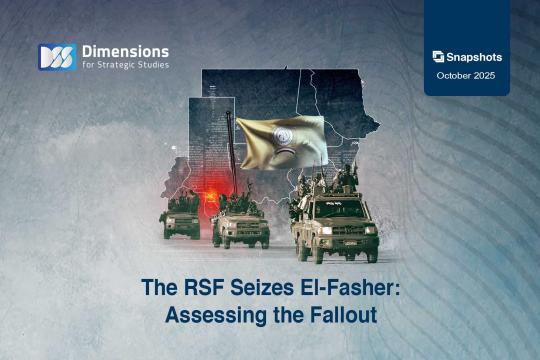
Western tanks in the face of Russia: what is next?
2023-01-301780 view
On January 25, 2023, German Chancellor Olaf Scholz announced that his country would send 14 Leopard 2 combat tanks to Ukraine, and allow its allies to also send them to Kyiv.
Following this announcement, responses followed by European governments, as the Polish Prime Minister, Mateusz Morawiecki, praised the request for an export license for 14 of these tanks. Spanish Defense Minister Margarita Robles also announced that her country is ready to send a number of tanks to Kiev, and train them to use them, but "always in coordination with the allies," and stated that Madrid was awaiting official German approval to take that important step in the course of defending the European security to the East. Portugal also announced its willingness to supply Kyiv with "Leopard 2", in addition to providing logistical services for training Ukrainian forces to use them, a position adopted by the Netherlands, which is currently considering supplying Kyiv with a number of tanks. The Finnish President, Sauli Niinisto, also expressed his country’s readiness to send tanks to Ukraine to strengthen its fighting ranks in the face of the Russian forces, and the Norwegian government stated that it is considering handing over 8 tanks out of 36 "Leopard 2" tanks to the Ukrainian army.
Canada also announced that it will provide a number of tanks to Ukraine, within the framework of strengthening its capabilities to withstand the Russian aggression, which will enter its second year in February 2023.
Europe’s sending of tanks and heavy weapons to Ukraine was one of the controversial issues about which visions vary, due to the consequences that may put Russia in direct confrontation with the West, which contributes to the expansion of the confrontations, and may push Russia to expand the use of stronger and newer types of weapons that it has in its arsenal.
After Germany announced its readiness to deliver tanks to Ukraine, US President Joe Biden announced that his country would send 31 M-1 Abrams combat tanks to Ukraine, in addition to providing Ukraine with spare parts and equipment in addition to training. Vladimir Putin tried to differentiate between the United States and its European allies, but failed to do so,” stressing that they are all united in their support for Ukraine and that they are keen on its victory in the battle; "Because it is a fight for freedom."
In the face of this Western heavy weapons mobilisation, the Russian Foreign Ministry announced that supplying Ukraine with German tanks is a remarkable escalation in the course of the war, and that it is part of a pre-planned war against Russia. The Russian Foreign Ministry spokeswoman accused the United States of dragging Europe into a major war, and the Russian ambassador to Germany announced that Berlin's decision to supply Leopard tanks to Kyiv is very dangerous, because it will raise the conflict to a new level of confrontation," noting that it contradicts what Germany had previously declared in terms of unwillingness to get involved in the conflict, accusing Berlin and its Western partners of being "not interested in a diplomatic solution to the crisis." Rather, they are counting on escalation.” And he warned that the victims of the German tanks would not only be Russian soldiers, but also of the civilian population, which would lead to real humanitarian disasters, revealing that Berlin was abandoning its “historic responsibility towards Russia.”
The Russian ambassador to the US called the delivery of US tanks to Ukraine "another flagrant provocation". The Kremlin spokesman Dmitry Peskov warned that any US tank sent to Ukraine "will burn like any other".
In contrast to the Russian criticisms, the Western justifications for this development in the battle map, a year after the start of the war, came as an attempt to strike a balance in the field in light of the clear superiority of the Russian side in tools and equipment, in addition to the huge difference in the level of the two armies, the Russian and the Ukrainian.
In this context, it can be said that the continuation of the war, and the widening scope of the confrontations - whether at the field level or at the level of weapons quality - carries with it many interpretations: the first of which is that it is an attempt to force Russia to accept negotiation, and thus reach a settlement to the crisis that prevents direct intervention from the European parties in the confrontation; secondly, the West’s desire to deplete more Russian capabilities on Ukrainian soil, and the West’s unwillingness to enable Putin to win; and third is an indirect message from Western countries led by the United States of America to the allies of the Russian Federation, led by China and Iran, that the economic sanctions and military exhaustion, will be present and strong in front of any of them trying to confront NATO and its hegemony over the global security system since 1991.





